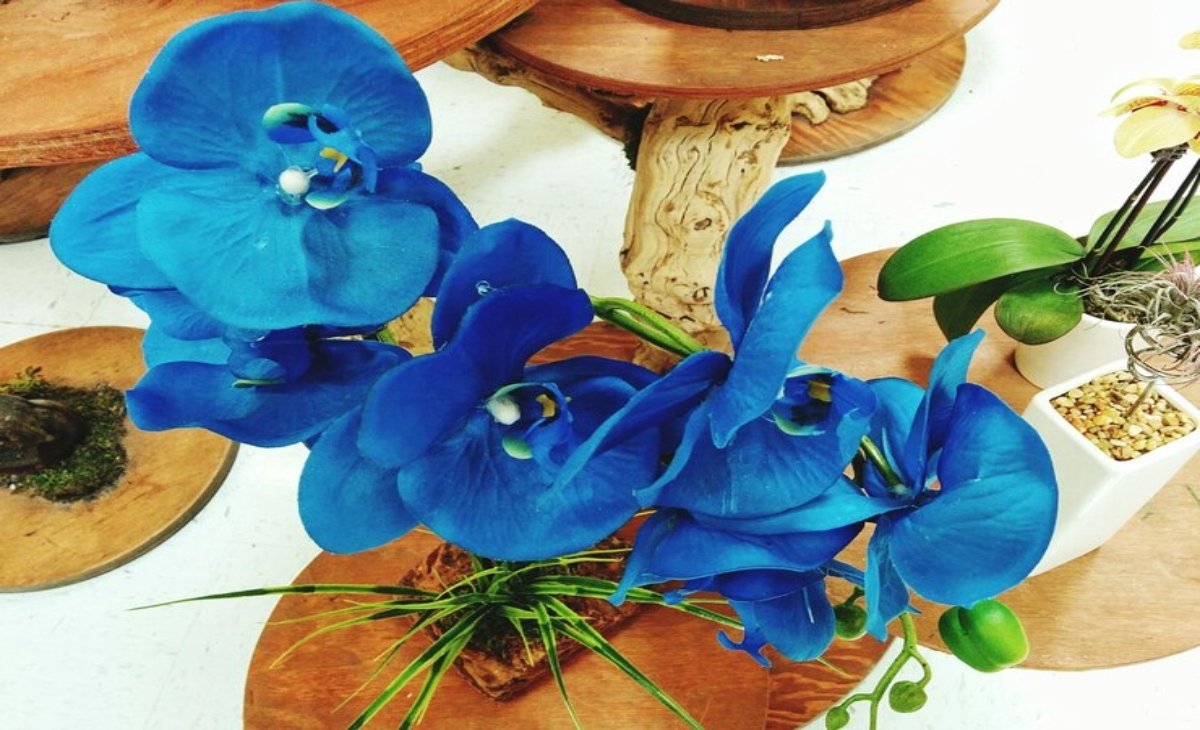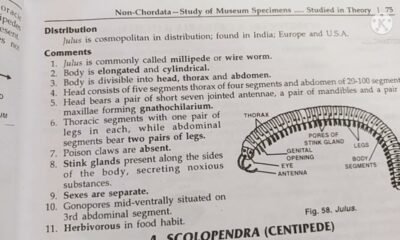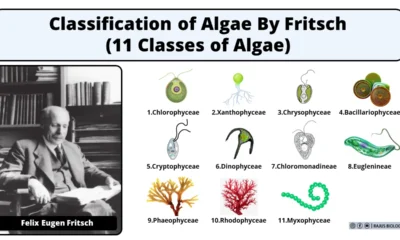Blog
Blue Orchid: The Rare Beauty of Nature’s Gem

Among the diverse and vibrant species in the floral world, few evoke as much fascination as the blue orchid. Revered for its exotic allure and perceived rarity, the blue orchid is more than just a beautiful bloom; it is a symbol of mystery, strength, and timeless elegance. The mere sight of a blue orchid can captivate the imagination, making it a prized possession in both natural and cultivated environments.
The blue orchid’s rich hues evoke emotions that are rarely stirred by more common flowers. Often misunderstood or mistakenly identified due to its elusive nature, the blue orchid continues to inspire botanists, artists, and spiritual thinkers alike. Whether admired for its aesthetics or cherished for its symbolism, the blue orchid holds a unique place in the tapestry of nature.
The Fascinating Origins of the Blue Orchid
The blue orchid does not originate from a single location. It can be found in various parts of the world, especially in tropical and subtropical climates. However, true blue orchids in nature are extremely rare. Most of what we see in florists or gardens labeled as blue orchids are often white orchids that have been dyed or genetically modified to achieve the blue coloring.
One of the few naturally occurring species close to blue in appearance is the Thelymitra crinita, a species native to Western Australia. This species, commonly known as the Queen Blue Sun Orchid, boasts vibrant blue petals and is an example of how nature occasionally gifts us with this uncommon hue. Despite this, the blue orchid remains a symbol of rarity because its natural existence is so limited.
The rarity of the true blue orchid adds to its prestige and mystique. Collectors and horticulturists go to great lengths to grow or modify orchids to achieve that deep, celestial shade of blue, striving to replicate what nature seldom offers. This journey to recreate the blue orchid is as much a scientific challenge as it is an artistic pursuit.
You Might Also Like: Morphology of Flowering Plants Biology Study Material
Symbolism and Cultural Significance
The blue orchid carries powerful meanings across various cultures and contexts. Its rare and striking appearance has long been associated with rarity itself, making it a fitting symbol for uniqueness and individuality. To give someone a blue orchid is to recognize their exceptional nature, to celebrate a one-of-a-kind spirit that cannot be compared or replaced.
In Eastern traditions, the blue orchid often symbolizes peace, tranquility, and spiritual clarity. The soft, serene hue is thought to calm the mind and promote inner balance. This is why blue orchids are frequently used in meditation spaces and healing environments.
In the Western world, the blue orchid is often associated with mystery and luxury. Its rich, royal hue is seen as a marker of elegance and taste. Unlike red or yellow orchids, which may represent passion or friendship, the blue orchid transcends simple emotion, offering instead a more introspective or philosophical representation of life and nature.
In the realm of art and literature, the blue orchid has often been a metaphor for unattainable love or eternal beauty. Its elusive presence and otherworldly appearance make it a poetic symbol of desires that are just out of reach, dreams that are endlessly pursued but never fully captured.
How Blue Orchids Are Created
Given their rarity in the wild, many blue orchids seen in homes or floral shops are created through special horticultural techniques. One common method is dye injection, where a white orchid is treated with blue dye through its stem or roots during the blooming stage. This results in the flower absorbing the color and presenting a vibrant blue appearance.
Another more advanced method involves genetic engineering. Scientists have attempted to introduce genes from blue-flowering plants like the butterfly pea into orchid DNA, with varying levels of success. These attempts highlight the challenges in creating a stable, naturally blue orchid without harming the plant’s health or longevity.
Although dyed orchids are visually striking, they are not permanent. Once the dyed flower drops and new blooms appear, they often return to their original white color. This fleeting beauty only enhances the mystique of the blue orchid, making each appearance feel temporary and precious.
The pursuit of the perfect blue orchid continues in laboratories and greenhouses worldwide. While purists may seek only the naturally occurring varieties, enthusiasts appreciate all forms, celebrating both nature’s work and human creativity in bringing this vision to life.
Blue Orchid in Home Décor and Floral Arrangements
The blue orchid has become a popular choice for those looking to make a sophisticated statement in their homes or at events. Its unique color allows it to stand out among more common floral varieties, lending a modern and elegant touch to any setting.
In home décor, the blue orchid often serves as a centerpiece. Whether placed in a minimalist white vase or integrated into a lush tropical arrangement, it instantly draws the eye. Its cool tone pairs well with both warm and neutral palettes, making it versatile for different interior styles.
Event planners and designers favor the blue orchid for weddings and luxury gatherings. It symbolizes love, respect, and strength, making it an ideal floral choice for meaningful occasions. Its presence elevates the atmosphere, adding a touch of rarity and class that few other flowers can match.
Florists often combine blue orchids with other exotic flowers to create dramatic, high-contrast arrangements. Paired with white roses, pale hydrangeas, or even deep purple calla lilies, the blue orchid provides a visual anchor that enhances the beauty of everything around it.
Caring for Blue Orchids at Home
Whether naturally colored or dyed, blue orchids require special care to maintain their beauty and vitality. As members of the orchid family, they have specific needs that differ from common houseplants.
Blue orchids thrive in indirect sunlight. Direct exposure can damage their delicate petals, especially those that have been dyed. A bright, filtered light source is best, simulating the dappled sunlight they would receive in their native forest habitats.
Watering should be done sparingly. Overwatering is a common mistake and can lead to root rot. Most orchid lovers recommend watering only when the potting medium feels dry to the touch, usually once a week. Using distilled or rainwater is preferable, as tap water may contain minerals that can harm the plant.
Humidity is another important factor. Orchids naturally grow in humid environments, so maintaining a level of 50–70% humidity around your blue orchid will help it flourish. Placing a humidity tray nearby or using a small humidifier can make a big difference.
Fertilizing during the growing season, usually spring and summer, will support healthy blooms. Choose a balanced, orchid-specific fertilizer and use it according to the label instructions. Too much fertilizer can harm the plant, so moderation is key.
Proper care ensures that your blue orchid continues to enchant and inspire long after it first blooms. The time and attention you give it are reflected in its ongoing vitality and presence.
Blue Orchid in Traditional Medicine and Wellness
Throughout history, orchids have played a role in various medicinal traditions, and the blue orchid is no exception. In traditional Chinese medicine, certain orchid species are believed to nourish the lungs, improve immunity, and restore energy balance.
Though specific studies on the blue orchid’s medicinal properties are limited, its presence in wellness culture is strong. Blue orchids are often used in aromatherapy and holistic spaces for their calming effect. Their serene color and elegant form promote relaxation and mindfulness, helping to create an environment of peace and rejuvenation.
Essential oils derived from orchids are occasionally used in skincare, praised for their moisturizing and anti-aging properties. While the blue orchid itself may not be the primary source, its symbolic association with purity and youthfulness makes it a popular motif in beauty products and wellness branding.
The flower is also featured in teas, tinctures, and herbal blends, though mostly for its visual appeal rather than active health benefits. In this way, the blue orchid contributes to a holistic experience, supporting the emotional and aesthetic aspects of wellness rather than providing direct medicinal value.
Environmental Importance and Conservation Efforts
The rarity of the blue orchid highlights the need for conservation. As habitat destruction and climate change continue to impact biodiversity, many orchid species face the threat of extinction. Preserving the environments where rare orchids grow is essential to maintaining their place in the natural world.
Botanical gardens, research institutions, and conservation groups around the world are working to protect orchid populations. These efforts include habitat preservation, seed banking, and sustainable cultivation practices that reduce the need for wild harvesting.
Education also plays a key role. As public interest in rare orchids grows, so does awareness of their vulnerability. Programs aimed at teaching people how to grow and care for orchids responsibly help reduce the impact on wild populations.
Supporting ethical growers and avoiding illegally sourced orchids are steps that individuals can take to contribute to conservation. By appreciating the blue orchid not just for its beauty but also for its ecological importance. We help ensure that future generations can experience its wonder.
Blue Orchid in Modern Art and Fashion
The striking appearance of the blue orchid has made it a muse for artists and designers across multiple disciplines. In fashion, it often appears as a pattern on high-end fabrics, symbolizing sophistication and bold elegance. Jewelry designers have also drawn inspiration from the flower, crafting intricate pieces that mimic its shape and hue.
In contemporary art, the blue orchid is used both literally and symbolically. It represents everything from unattainable beauty to environmental fragility. Paintings, sculptures, and digital art installations often feature the blue orchid as a focal point, inviting viewers to explore its deeper meanings.
Photographers are especially drawn to its vivid coloration and intricate form. Macro shots of blue orchids are popular in nature photography, capturing the fine details that make the flower so mesmerizing. These images often serve as visual meditations, drawing attention to the subtle complexities of life.
In the digital space, the blue orchid has found new life as a popular motif in social media aesthetics, wallpapers, and graphic design. Its timeless beauty continues to inspire creativity in both physical and virtual realms.
The Timeless Allure of the Blue Orchid
The blue orchid is more than a flower. It is a living symbol of rarity, elegance, and wonder. From its elusive natural origins to its place in modern art, wellness, and conservation, the blue orchid continues to fascinate and inspire.

 Blog7 months ago
Blog7 months ago[PPT] Human Reproduction Class 12 Notes
- Blog7 months ago
PG TRB Botany Study Material PDF Free Download
- Blog7 months ago
Contribution of Indian Phycologists (4 Famous Algologist)

 Blog7 months ago
Blog7 months agoCell The Unit of Life Complete Notes | Class 11 & NEET Free Notes

 Blog7 months ago
Blog7 months ago[PPT] The living world Class 11 Notes

 Blog7 months ago
Blog7 months agoJulus General Characteristics | Free Biology Notes

 Blog7 months ago
Blog7 months agoClassification of Algae By Fritsch (11 Classes of Algae)
- Blog7 months ago
Class 12 Biology Notes Chapter wise PPT












